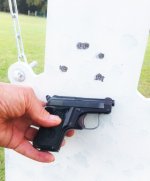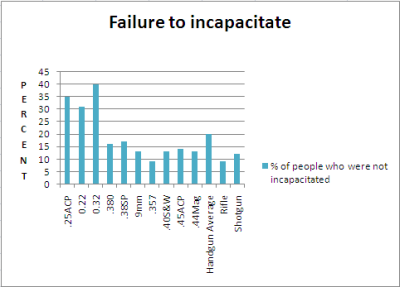Gentlemen,
Many people think that the 25 ACP handgun is insufficient for personal protection. And in some scenarios it very well may be. However, I personally believe there is a place for very small “mouse guns” such as a Beretta 950, which I carry in very special situations, like places where larger, more powerful handguns can't be carried. But as with any personal defense handgun, the key is to practice and practice and practice.
This picture shows a metal target (from ShootingTargets7) and my Beretta 950. It was fired from 20 feet rapid fire—all shots in about 3 seconds. A 25 ACP cartridge might not be powerful, but that many, that fast, and in that location would qualify as sufficient self defense...in my opinion.
Gene Pool
Many people think that the 25 ACP handgun is insufficient for personal protection. And in some scenarios it very well may be. However, I personally believe there is a place for very small “mouse guns” such as a Beretta 950, which I carry in very special situations, like places where larger, more powerful handguns can't be carried. But as with any personal defense handgun, the key is to practice and practice and practice.
This picture shows a metal target (from ShootingTargets7) and my Beretta 950. It was fired from 20 feet rapid fire—all shots in about 3 seconds. A 25 ACP cartridge might not be powerful, but that many, that fast, and in that location would qualify as sufficient self defense...in my opinion.
Gene Pool


